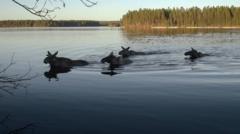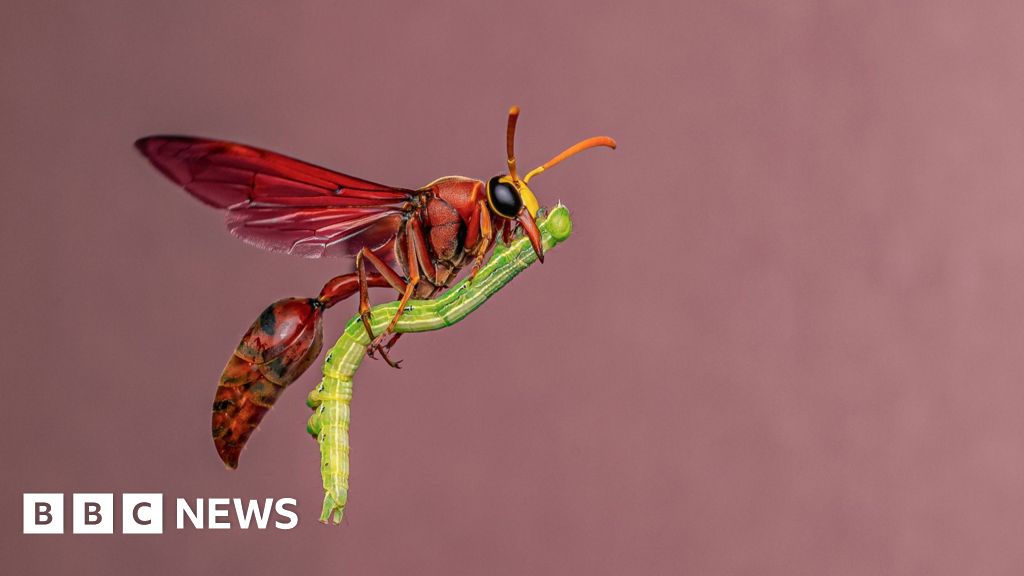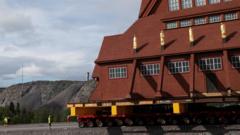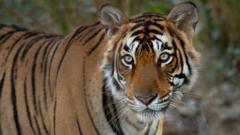As spring unfolds in Sweden, millions are once again captivated by the captivating spectacle of "The Great Moose Migration." Every year for the past six seasons, viewers have flocked to a continuous livestream on SVT Play, featuring these majestic animals as they navigate the Angerman River in their quest for lush summer foraging grounds. This year, the broadcast kicked off a week early, a change attributed to warmer temperatures sweeping through northern Sweden.
The comforting nature of the livestream has indeed evolved into a "slow TV" phenomenon. It has attracted a dedicated following since its launch in 2019, with viewers like 60-year-old Cait Borjesson becoming deeply attached to the stream. Cait first discovered the broadcast during the Covid-19 lockdowns, finding it to be an incredibly soothing escape. “It’s unbelievably relaxing,” she shared. “You get the sounds of nature, making you feel like you’re outdoors.” This dedication has transformed the migration into an annual tradition for Cait, compelling her to take time off work to indulge in the three-week viewing experience.
Social media has also played a pivotal role in bonding fans of the livestream. A vibrant Facebook group with over 77,000 members has sprung up, where participants congregate to discuss their experiences and emotional responses to the migration. The broadcast primarily highlights the moose's passage through the northern village of Kullberg, showcasing almost 95% of the moose population in the region as they seek out better habitats after wintering in warmer spots.
According to Goran Ericsson, a faculty dean at the Swedish University of Agricultural Sciences and a science advisor to the event, the annual migration has roots tracing back to the Ice Age. He mentioned that the early migration this year was influenced by a milder winter, echoing nature's unpredictable rhythms. The show relies on over 30 cameras to capture every moment of this remarkable journey, drawing close to a million viewers during its inaugural season and amassing up to nine million in the latest broadcast.
Researcher Minh-Xuan Truong, who has explored viewer sentiments about the livestream, noted a contrasting preference among the audience for the simplicity of the natural soundscape over added music or commentary. Many viewers describe the experience as an inviting "open window to a forest," underlining the engagement with unedited, real-time portrayals of wildlife activities.
Sweden boasts around 300,000 moose, revered as the "King of the Forest," illustrating the significant connection between the animals and the nation’s cultural identity. With this year's migration already in full swing, the livestream continues to showcase the unique relationship between humans and nature in a refreshing and peaceful manner.
The comforting nature of the livestream has indeed evolved into a "slow TV" phenomenon. It has attracted a dedicated following since its launch in 2019, with viewers like 60-year-old Cait Borjesson becoming deeply attached to the stream. Cait first discovered the broadcast during the Covid-19 lockdowns, finding it to be an incredibly soothing escape. “It’s unbelievably relaxing,” she shared. “You get the sounds of nature, making you feel like you’re outdoors.” This dedication has transformed the migration into an annual tradition for Cait, compelling her to take time off work to indulge in the three-week viewing experience.
Social media has also played a pivotal role in bonding fans of the livestream. A vibrant Facebook group with over 77,000 members has sprung up, where participants congregate to discuss their experiences and emotional responses to the migration. The broadcast primarily highlights the moose's passage through the northern village of Kullberg, showcasing almost 95% of the moose population in the region as they seek out better habitats after wintering in warmer spots.
According to Goran Ericsson, a faculty dean at the Swedish University of Agricultural Sciences and a science advisor to the event, the annual migration has roots tracing back to the Ice Age. He mentioned that the early migration this year was influenced by a milder winter, echoing nature's unpredictable rhythms. The show relies on over 30 cameras to capture every moment of this remarkable journey, drawing close to a million viewers during its inaugural season and amassing up to nine million in the latest broadcast.
Researcher Minh-Xuan Truong, who has explored viewer sentiments about the livestream, noted a contrasting preference among the audience for the simplicity of the natural soundscape over added music or commentary. Many viewers describe the experience as an inviting "open window to a forest," underlining the engagement with unedited, real-time portrayals of wildlife activities.
Sweden boasts around 300,000 moose, revered as the "King of the Forest," illustrating the significant connection between the animals and the nation’s cultural identity. With this year's migration already in full swing, the livestream continues to showcase the unique relationship between humans and nature in a refreshing and peaceful manner.



















